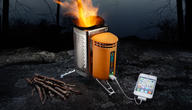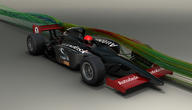You are here
Heat Transfer refers to how heat energy moves through the world around us. Refrigerators, ovens, laundry machines, cars, and buildings all manage the flow of heat. Engineers and designers who understand heat transfer can use energy more effectively by optimizing the form and materials of their designs.
Heat Transfer Basics
There are three modes of heat transfer: conduction, convection and radiation. All three modes are often at work at the same time for any given object.
- Conduction – When heat flows through a material itself based on temperature differences.
- Convection - When heat is transferred through the bulk motion of a fluid.
- Radiation – When heat travels as electromagnetic waves (like light).
For each of these modes, we measure the rate of heat transfer (q) in watts.
Understanding the physics and thermodynamics behind heat transfer can help you optimize your designs. For example, the rate of heat transfer depends on the materials you use and it goes up as both the temperature difference and surface area increase. You may want to encourage or avoid this depending on your design goals.
Simulating Heat Transfer
Simulation software can help engineers optimize heat transfer in their designs. Computational fluid dynamics (CFD) simulations take into account both heat transfer and fluid flow. CFD analysis can return both visual and technical data to help you create designs that use energy more effectively.
You can perform this type of analysis using Autodesk Simulation CFD or and Autodesk Simulation Multiphysics software. See more about Simulation for Sustainable Design.
| Attachment | Size |
|---|---|
| 389.25 KB | |
| 8.4 MB | |
| 38.97 MB |
Links and References
- Basics of Heat Transfer
- Insulation Methods and Coefficients




